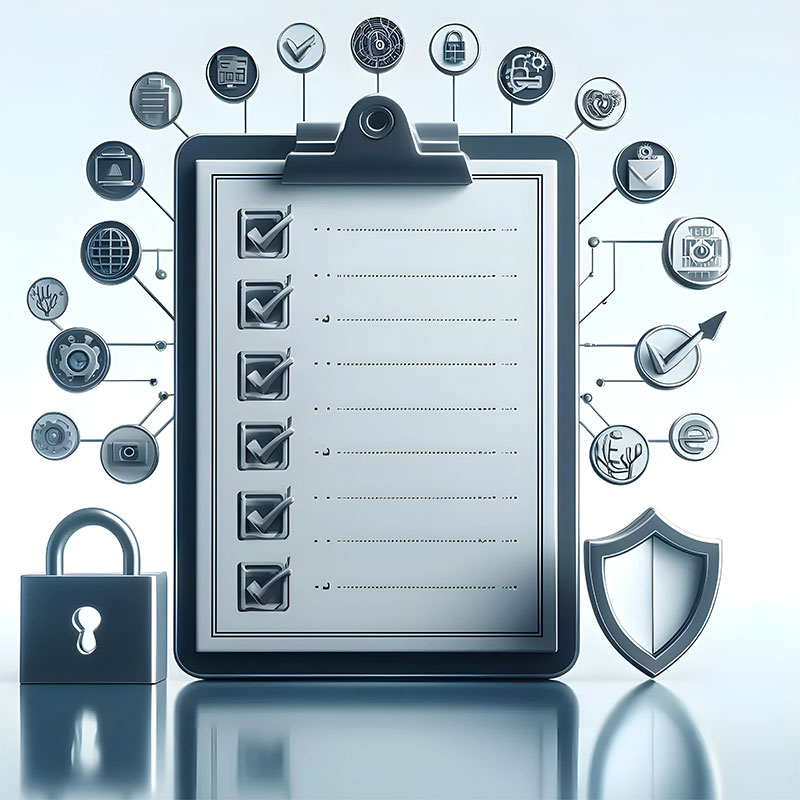Cybersecurity Checklist
Cybersecurity Checklist for SMEs.
In today's digital age, small and medium-sized enterprises (SMEs) are just as vulnerable to cyber-attacks as large corporations. However, they often lack the resources and expertise to protect themselves effectively. Here is a cybersecurity checklist covering a range of measures providing a basic foundation of cybersecurity.
Organizational Measures
A strong foundation for cybersecurity begins with solid organizational practices. These include the creation and enforcement of policies, employee training, and clear responsibilities:
- Policies and Procedures: Develop clear security policies that govern the handling of sensitive data and the use of IT resources. Regularly review and update these policies to keep pace with evolving threats.
- Employee Training: Raise employee awareness about cyber threats and train them on safe handling of information and IT systems. Regular training sessions help sharpen awareness of security risks and adjust behavior accordingly.
- Clear Responsibilities: Assign specific individuals or teams to oversee and implement security measures. This could involve appointing a dedicated IT security officer or team.
Technical Measures
In addition to organizational steps, technical measures are crucial for protecting a company's IT infrastructure:
- Network Security: Implement firewalls, intrusion detection systems (IDS), and virtual private networks (VPNs) to secure the network from unauthorized access and monitor traffic.
- Endpoint Security: Ensure all devices, including computers and mobile devices, have up-to-date antivirus software and security patches. This helps to fend off malware and close security gaps.
- Data Backup and Recovery: Regularly back up your data and test the recovery process. This ensures that you can quickly restore operations and recover important information in the event of data loss.
- Access Controls: Implement strict access controls to ensure that only authorized individuals have access to sensitive data and systems. This can be achieved through strong password policies, two-factor authentication (2FA), and role-based access controls.
- Encryption: Encrypt sensitive data both in storage and during transmission to protect it from unauthorized access. This is especially important for personal data and confidential business information.
Regular Review and Improvement
Cybersecurity is an ongoing process, not a one-time project. Regularly reviewing the effectiveness of implemented measures and making adjustments to address new threats is essential:
- Security Audits: Conduct regular security audits to identify and address vulnerabilities. This can be done through internal reviews or by hiring external experts.
- Incident Response Plan: Develop a plan for responding to security incidents, detailing steps for containment and damage control. Regularly test and update this plan.
- Current Threat Information: Stay informed about the latest threats and vulnerabilities. Subscribe to security newsletters and use threat intelligence services to stay updated.

How we can help
Whether you're starting with implementing cybersecurity checklists or seeking to develop advanced strategies, Teichmann International (IT Solutions) AG is available to support and guide you in all cybersecurity matters. Our expert team is here to help you navigate the complexities of achieving robust cyber resilience against today’s rapidly evolving risks. Contact us today to learn more.
